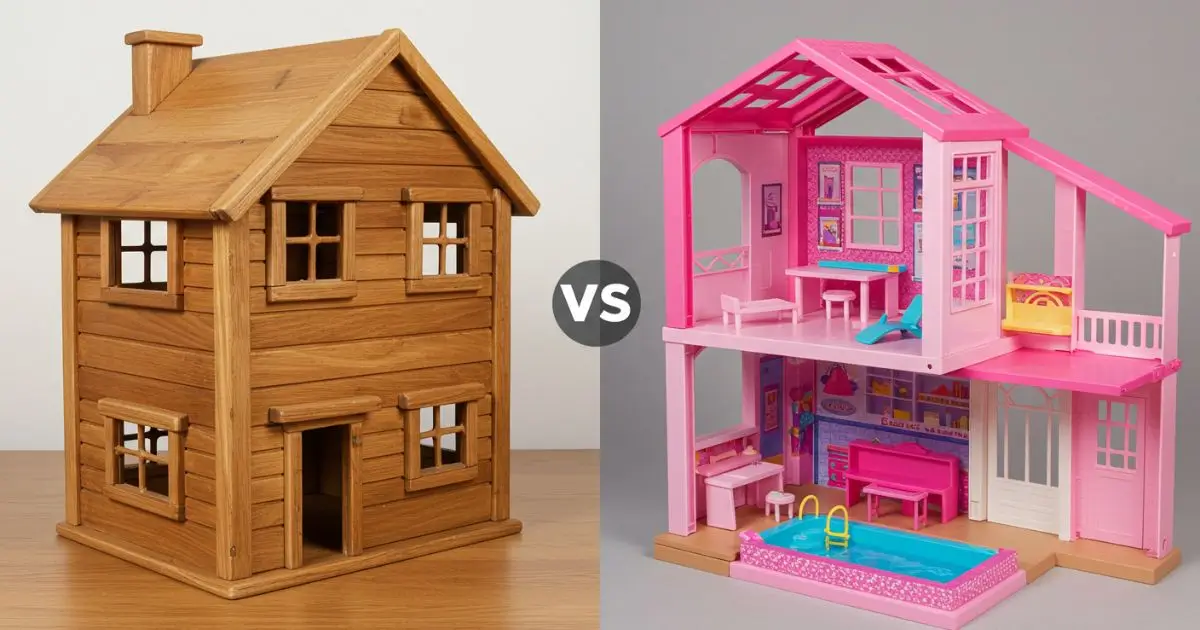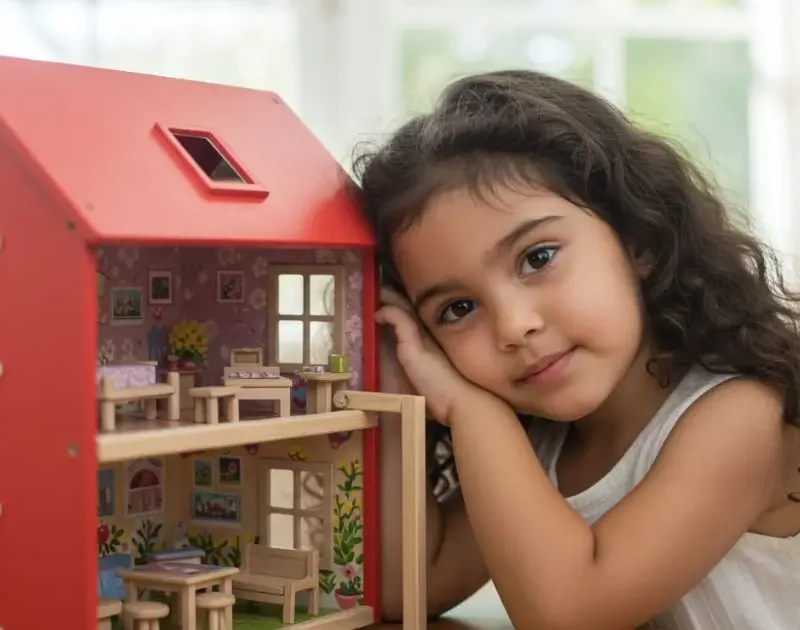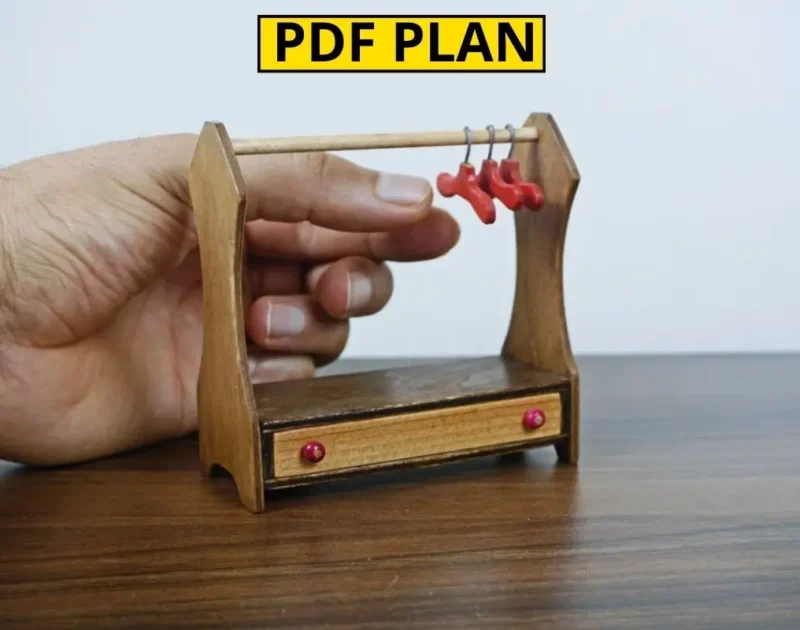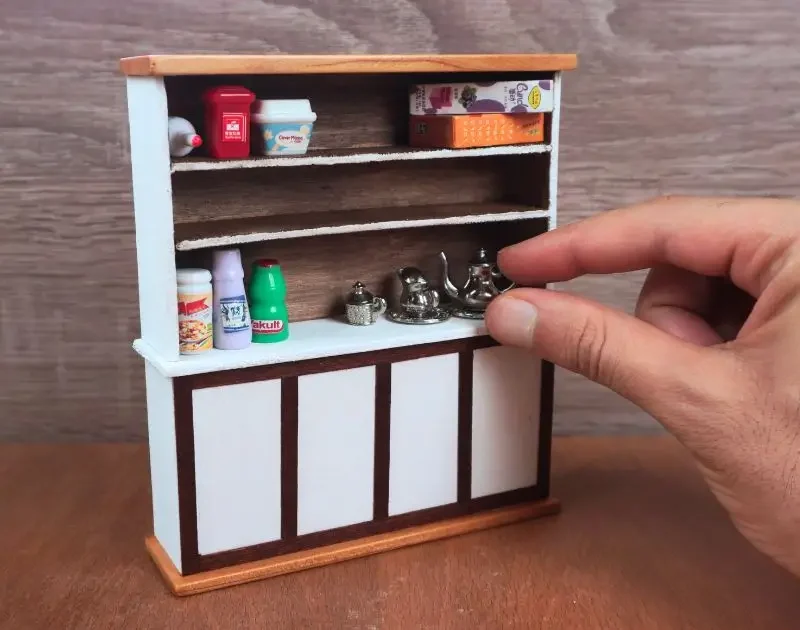Table of Contents
As a dollhouse furniture designer with over 5 years of experience, I’ve seen many parents struggle to choose between a wooden Barbie house or plastic . This decision affects the child’s play, development, and the overall cost. Here are my professional insights to help you make the best choice.
The dollhouse market has evolved dramatically, but one question remains constant: should you invest in a traditional wooden barbie doll house or opt for the colorful convenience of plastic alternatives? Let me guide you through this decision with the expertise I’ve gained from creating custom dollhouses and observing children’s play patterns firsthand.
Who Is This Article For?
This comprehensive guide is designed for parents, grandparents, and gift-givers who want to make an informed decision about dollhouse purchases. You’re likely someone who:
- Values quality toys that promote imaginative play
- Considers long-term investment over immediate savings
- Wants to understand the developmental benefits of different materials
- Seeks expert guidance from someone in the dollhouse industry
This article is particularly valuable if you’re debating between spending $50-150 on a plastic dollhouse versus $100-400 on a quality wooden option. However, if you’re looking for the cheapest possible option regardless of quality, or need something that can be easily replaced, this detailed comparison might provide more depth than you need.
User-Friendliness: Setup and Play Experience
Wooden Barbie House Advantages
A quality wooden barbie house typically requires more initial assembly time – usually 2-4 hours depending on complexity. However, this apparent disadvantage becomes a bonding opportunity. I’ve watched families turn assembly into a memorable experience, with children helping to organize pieces and anticipate their dollhouse’s completion.
The setup process teaches patience and following instructions, valuable skills for developing minds. Once assembled, wooden dollhouses offer superior stability. Children can play vigorously without worrying about walls collapsing or pieces breaking during enthusiastic play sessions.
Plastic Dollhouse Considerations
Plastic alternatives often feature snap-together construction, allowing for quicker setup in 30-60 minutes. The immediate gratification appeals to younger children who struggle with delayed satisfaction. However, this convenience sometimes comes at the cost of structural integrity during extended play.
The lightweight nature of plastic makes these dollhouses portable – perfect for families who frequently relocate or want to move the toy between rooms easily.
Durability & Quality: Long-Term Investment Analysis
Material Construction Comparison
Having worked with both materials extensively, I can confidently state that a well-constructed wooden barbie doll house will outlast plastic alternatives by decades. Premium wooden dollhouses use solid wood construction with reinforced joints, creating heirloom-quality pieces that can serve multiple generations.
The paint and finishes on quality wooden dollhouses resist chipping and fading better than their plastic counterparts.
Maintenance Requirements
Wooden dollhouses require minimal maintenance – occasional dusting and rare touch-up painting. The natural material ages gracefully, developing character that many families cherish. Plastic dollhouses, while requiring less careful handling, are more susceptible to permanent staining and sun damage that can’t be easily repaired.
Pros & Cons
Wooden Barbie House Pros:
- Superior durability lasting 20+ years
- Heirloom quality passing between generations
- Enhanced stability during play
- Natural, non-toxic materials
- Better resale value retention
- Encourages longer attention spans
- Develops assembly and problem-solving skills
Wooden Barbie House Cons:
- Higher initial investment ($100-400)
- Longer assembly time required
- Heavier weight limits portability
- May require adult supervision during setup
- More expensive to replace if damaged
Plastic Dollhouse Pros:
- Lower upfront cost ($30-150)
- Quick assembly process
- Lightweight and portable
- Bright, attractive colors
- Easy to clean and maintain
- Readily available replacement parts
Plastic Dollhouse Cons:
- Shorter lifespan (2-5 years typically)
- Less stable during active play
- Potential for toxic materials in cheaper options
- Poor resale value
- More likely to break during rough play
- May encourage disposable toy mentality
Alternatives & Comparisons
Premium Wooden Option: KidKraft Majestic Mansion
This wooden barbie house represents the gold standard, featuring four floors, eight rooms, and 34 furniture pieces. Priced around $300-400, it offers exceptional build quality and intricate details that spark imagination.
Quality Plastic Alternative: Barbie Dreamhouse
The official Barbie Dreamhouse costs $200-250 and provides modern features like working elevators and light-up elements. While less durable than wooden options, it offers contemporary appeal and interactive features wooden dollhouses can’t match.
Budget Consideration
For families with limited budgets, consider starting with a quality wooden dollhouse shell and gradually adding furniture and accessories. This approach spreads the investment over time while ensuring the core structure will last for years.
Conclusion
After years of crafting dollhouses and observing children’s play patterns, I firmly believe that a quality wooden barbie house represents the superior choice for most families. While the initial investment is higher, the durability, play value, and potential for generational enjoyment make wooden dollhouses worthwhile investments.
The enhanced stability encourages more elaborate play scenarios, while the assembly process provides valuable learning opportunities. Most importantly, wooden dollhouses grow with children, remaining engaging from toddlerhood through pre-teen years.
However, plastic dollhouses serve specific needs – particularly for families prioritizing portability, immediate setup, or working within tight budgets. The key is choosing quality options regardless of material and understanding your family’s specific priorities.
My professional recommendation: invest in a wooden dollhouse if your budget allows. Your child will enjoy years of superior play experiences, and you might find yourself passing down a treasured family heirloom that sparked countless hours of imagination and creativity.




